MotionXR
Summary
MotionXR is a speculation on the implications of how we might socialize, mingle, interrupt, produce, and design shared experiences as technologies advance. This platform imagines a future that allows one to enter a virtual scene by synchronizing their body movement with the scene creator.
MotionXR is a speculation on the implications of how we might socialize, mingle, interrupt, produce, and design shared experiences as technologies advance. This platform imagines a future that allows one to enter a virtual scene by synchronizing their body movement with the scene creator.
Team
By Jessica (Jessy) Escobedo, Ruoyong Hong (Eli), Justeen Lee (Zhendong Li)
External Actors:
Joanna Burke (lead), Ian Coleman, Lianne O’Shea, Sarah Blandy, Tim Copacz, Brent Hortz, Jordan McIntyre, Dominic Lee, Jessica Troiani, Alex Bankier
By Jessica (Jessy) Escobedo, Ruoyong Hong (Eli), Justeen Lee (Zhendong Li)
External Actors:
Joanna Burke (lead), Ian Coleman, Lianne O’Shea, Sarah Blandy, Tim Copacz, Brent Hortz, Jordan McIntyre, Dominic Lee, Jessica Troiani, Alex Bankier
Context
This future will exist when mass adoption of this technology exists; MotionXR imagines and speculates scenarios of cultural assimilation. Extended reality (XR) currently refers to the merging of existing technologies, AR and VR. For the purposes of this project, we’re defining XR as an imagined future that does not exist today, but is based on the trajectory of AR and VR technologies where they require no headsets and body tracking is perfected.

Project Overview
The emergence of AR/VR technologies have demonstrated massive potential of how their applications change the way we live in the future. It’s not hard to imagine there will be no need for tethered VR headsets to see VR contents, no boundary between AR and VR, or detailed full body tracking becomes prevailing assumptions. In addition, even though there are ongoing debates about the difference between AR, VR, and MR, they will all inevitably combine and contribute to XR, extended reality. Then, we ask ourselves to speculate how we share those great virtual experiences in our everyday social interactions, as we progressively transition to that future. Inspired by human movements, we propose MotionXR, a new interaction model and platform based on motion and rhythm for future extended reality.
MotionXR is a speculation on the implications of how we might socialize, mingle, create, interrupt, and coordinate shared experiences with extended reality (AR, VR, MR) in the near future. This platform that allows one to enter someone else’s virtual scene by synchronizing his/her body movements (motion and rhythm) with the scene creator.
In order to sync into a Creator’s virtual world, first, a Creator needs to be within one’s field of view. Then one (Follower) can begin to imitate the Creator’s moves. Once the specific body movements are synchronized, the Creator’s scene will render in real-time in both people’s views. If the Follower stops or fails to replicate the same movement, they are out of sync, and the Follower will exit the creator’s virtual.
In this first iteration, there is no limit to the amount of syncing instances that can occur-- one can sync up until the creator of the scene decides to quit rendering their scene. With Unity3D, 360 video, and motion capture actors, we created functional prototypes to demonstrate how one synchronizes to three different virtual worlds of Creators on a street, and unintentionally synchronize to virtual worlds as a result of a passing crowd’s similar body movements. Also, we made short two films to show two additional implications of this platform: how a Creator may attract a crowd to follow and imitate his/her movements and how this platform may lead a Follower to an unintended destination.
3 Demo Scenes

A user imitates the motions of Jessy
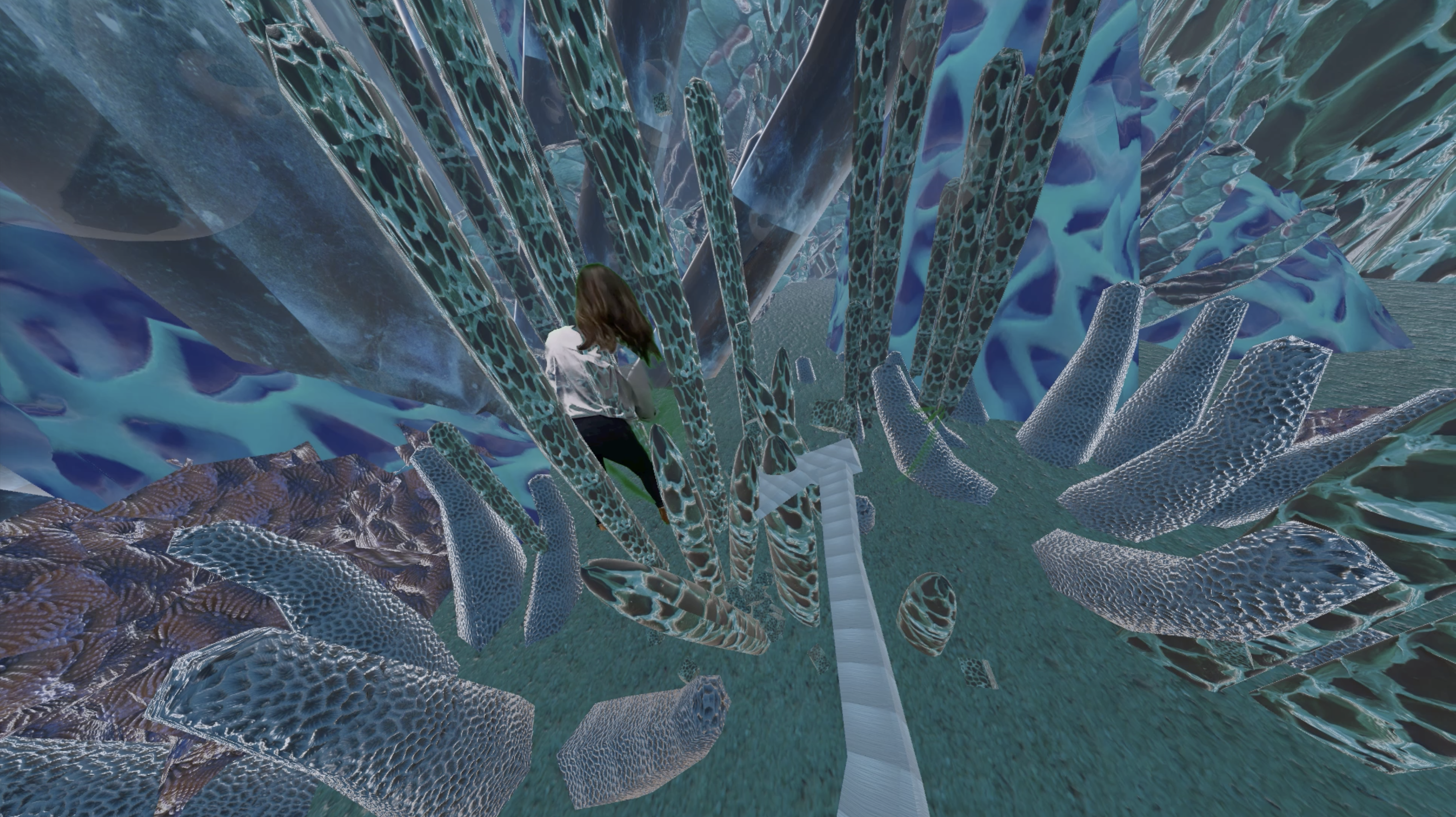
User is synced with the Jessy’s virtual scene while conitnuing the motions
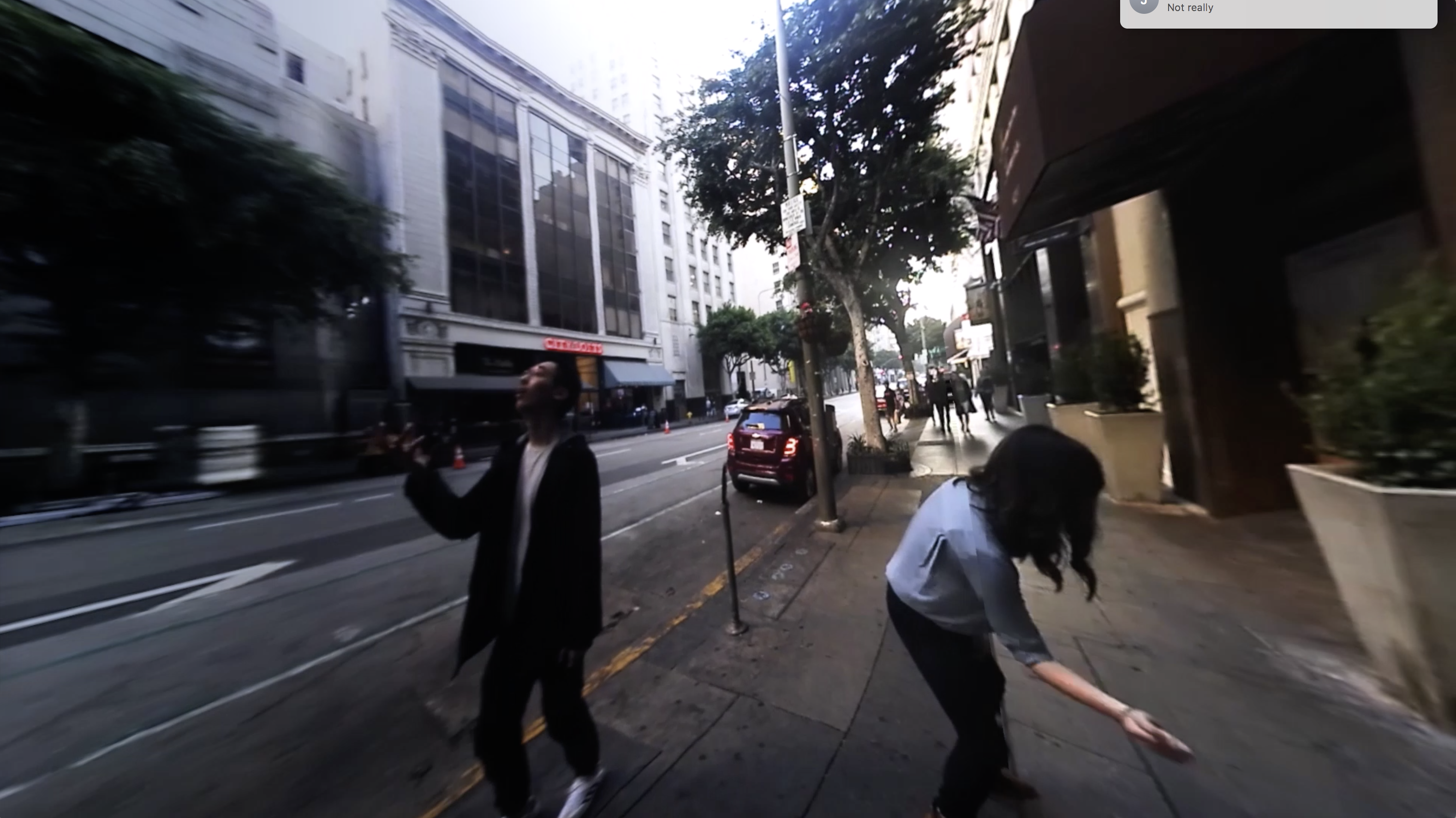 User is brought back to reality after un-syncing and stopping imitating Jessy’s moves
User is brought back to reality after un-syncing and stopping imitating Jessy’s moves Eli’s Cup holding virtual scene
Eli’s Cup holding virtual scene Justeen’s brushing fossils virtual scene
Justeen’s brushing fossils virtual scene
Virtual Scenes Emerging from Accidental Syncing with a Crowd Passing
Virtual Scenes Emerging from Accidental Syncing with a Crowd Passing


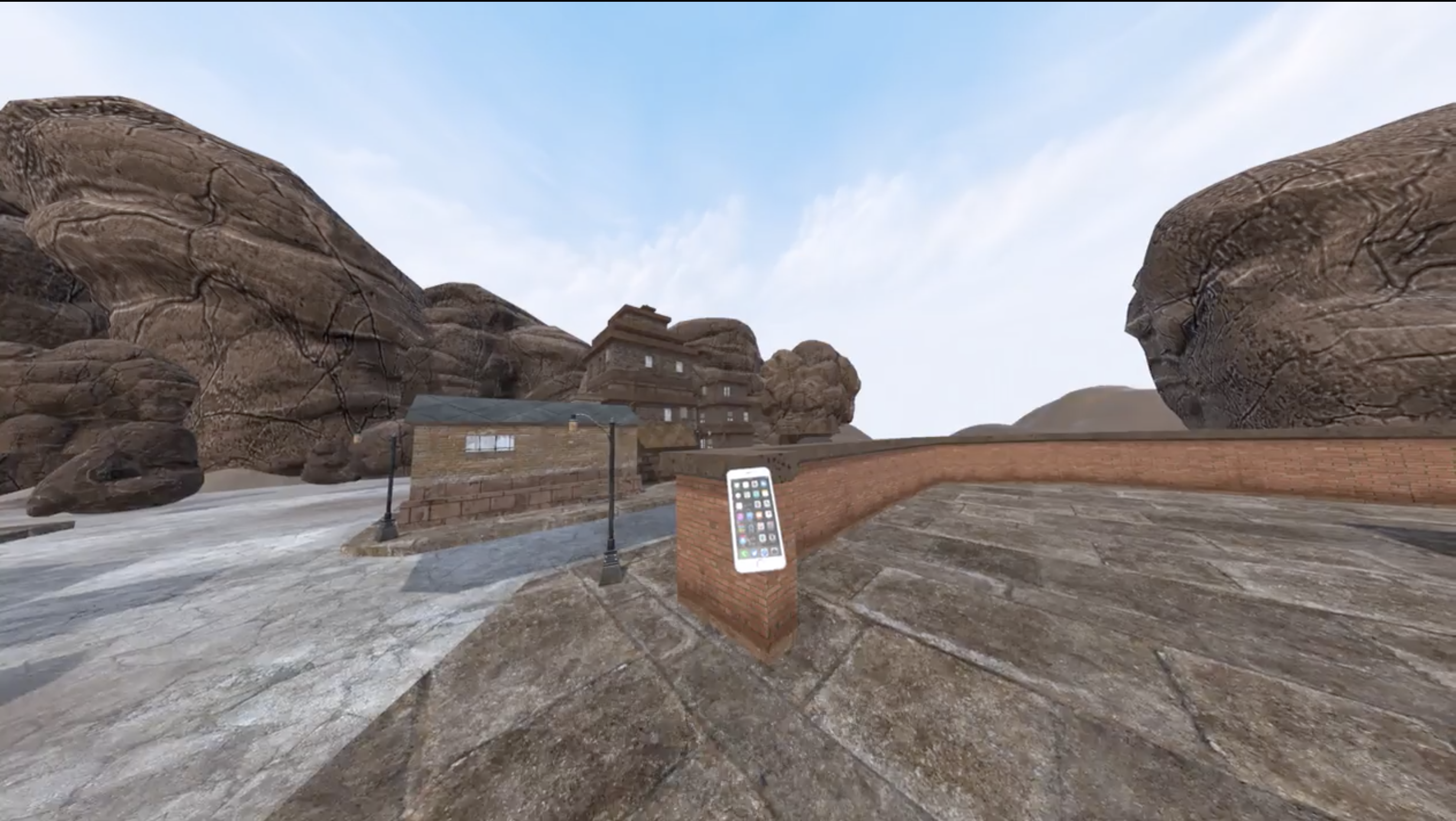
Motion Studies
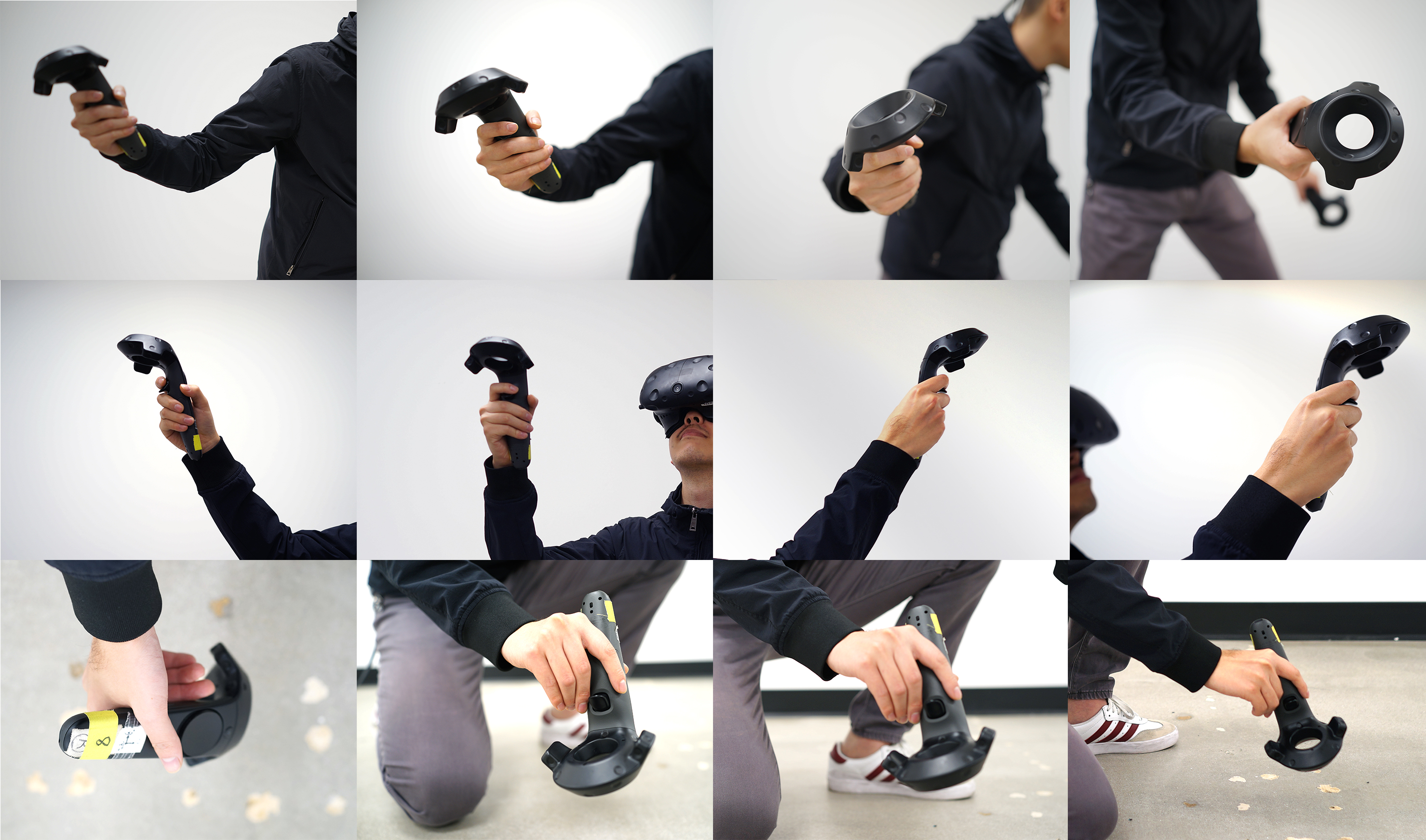
Row 1: Chopping Coral, Row 2: Holding Cup, Row 3: Brushing Fossils
 Chopping Coral
Chopping Coral

 Holding a cup
Holding a cup
 Unintentionally syncing when holding up cellphone while passing others on the street
Unintentionally syncing when holding up cellphone while passing others on the street Greenscreening ourselves performing our movements to show in VR video and simulated environment
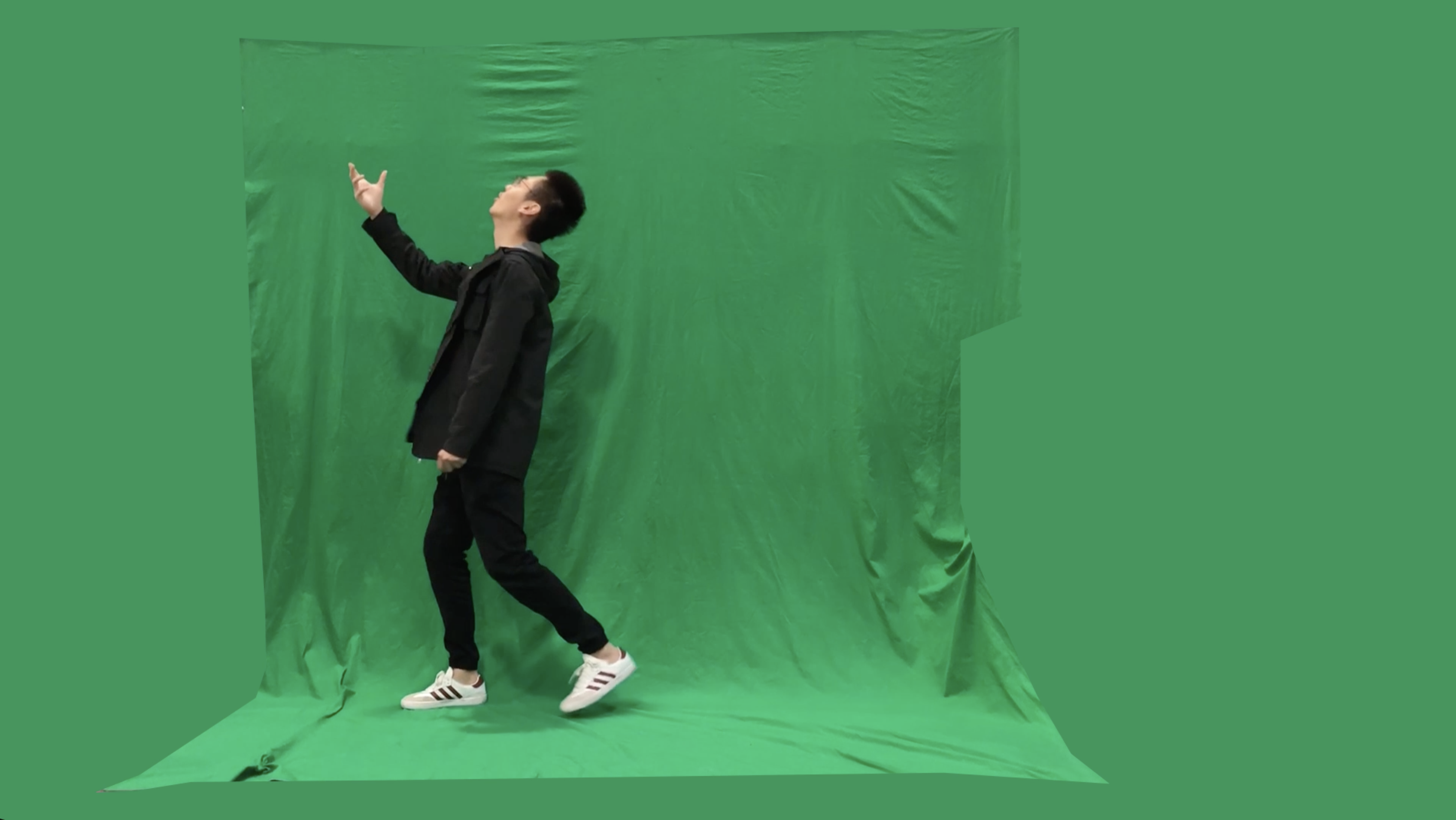 Holding a cup catching money on the street
Holding a cup catching money on the street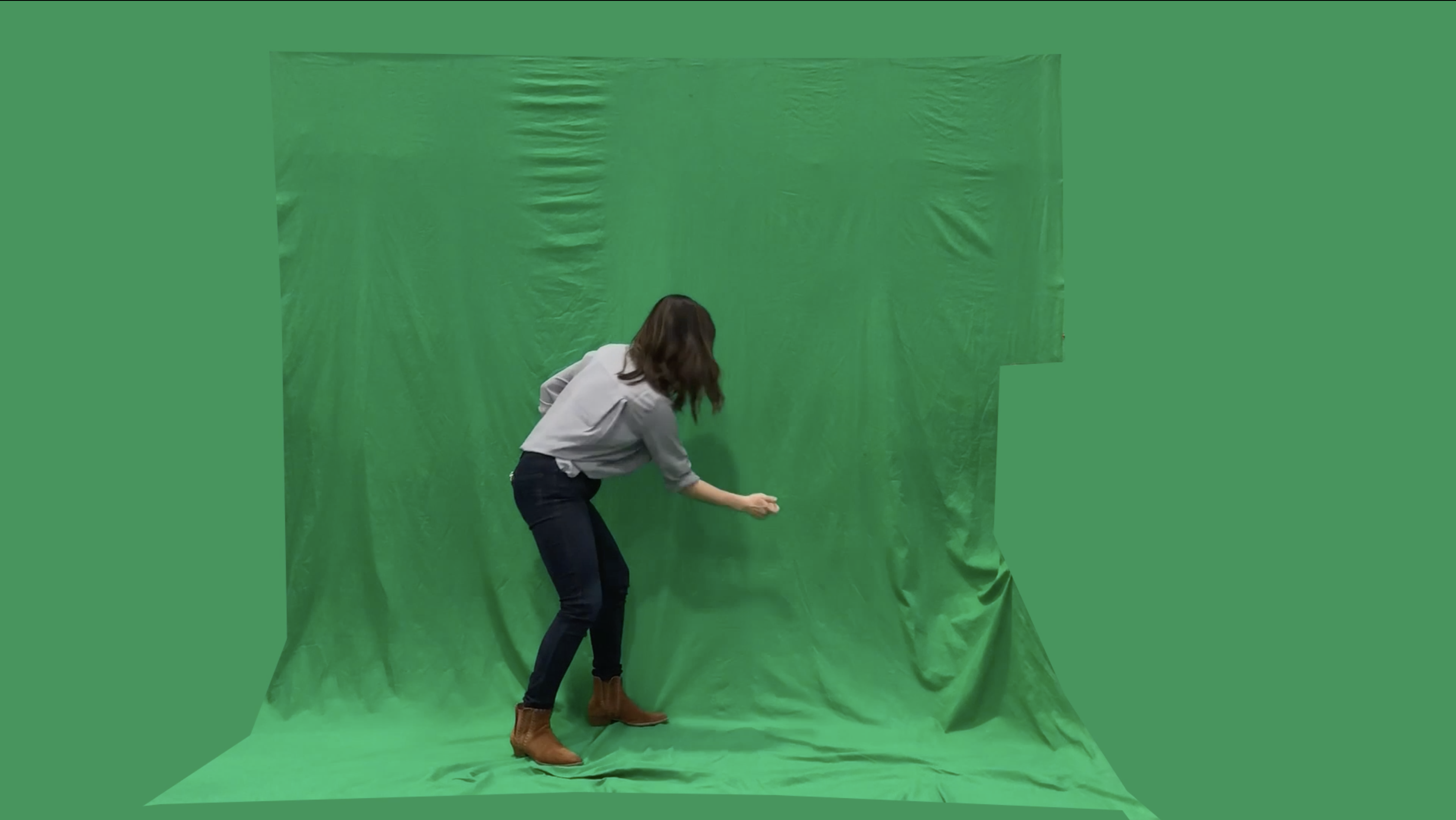 Chopping coral underwater
Chopping coral underwater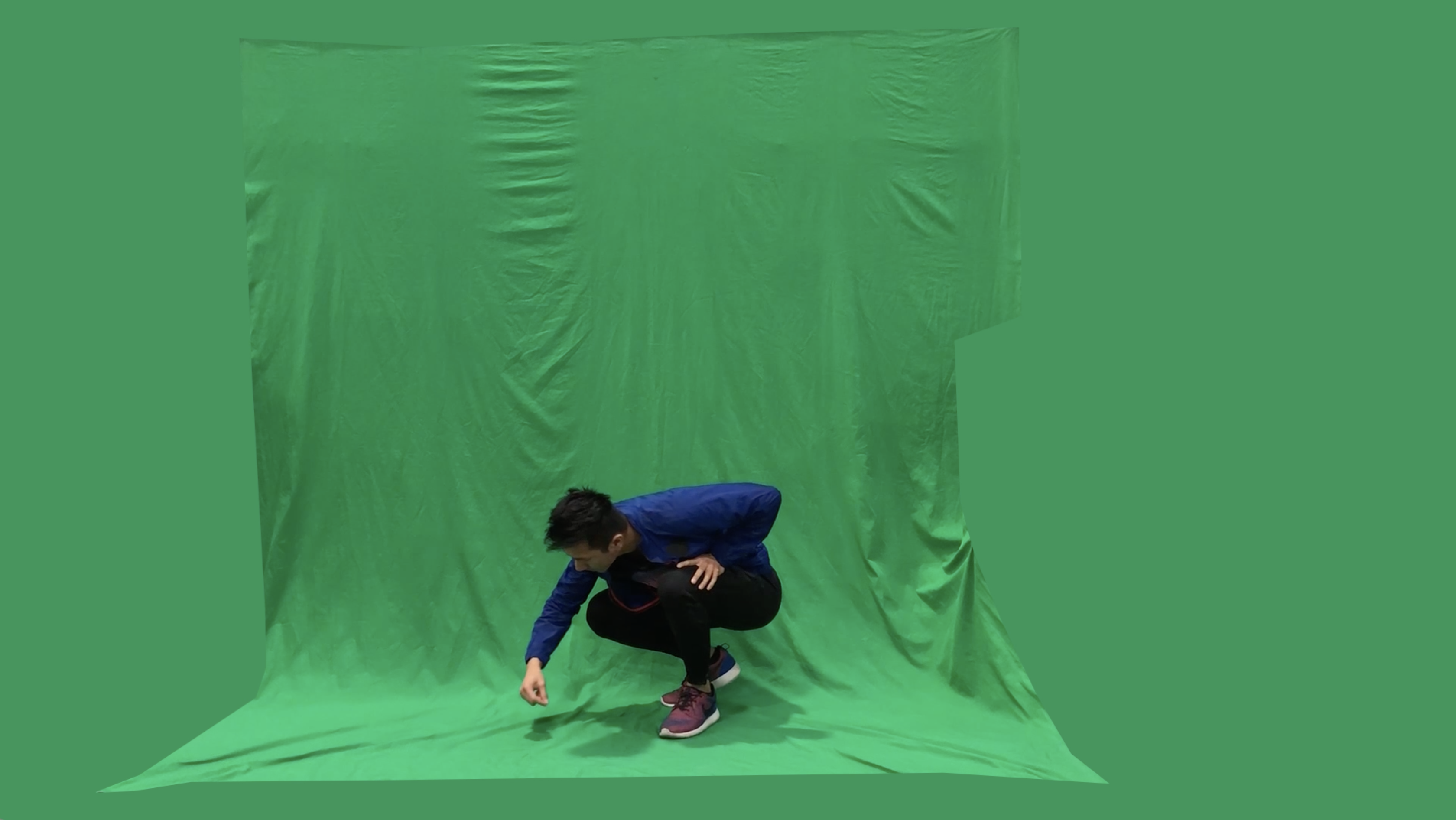 Brushing fossils in the desert
Brushing fossils in the desertShoot 1 (Documentation)



Shoot 2 ![]()
![]()
![]()
![]()
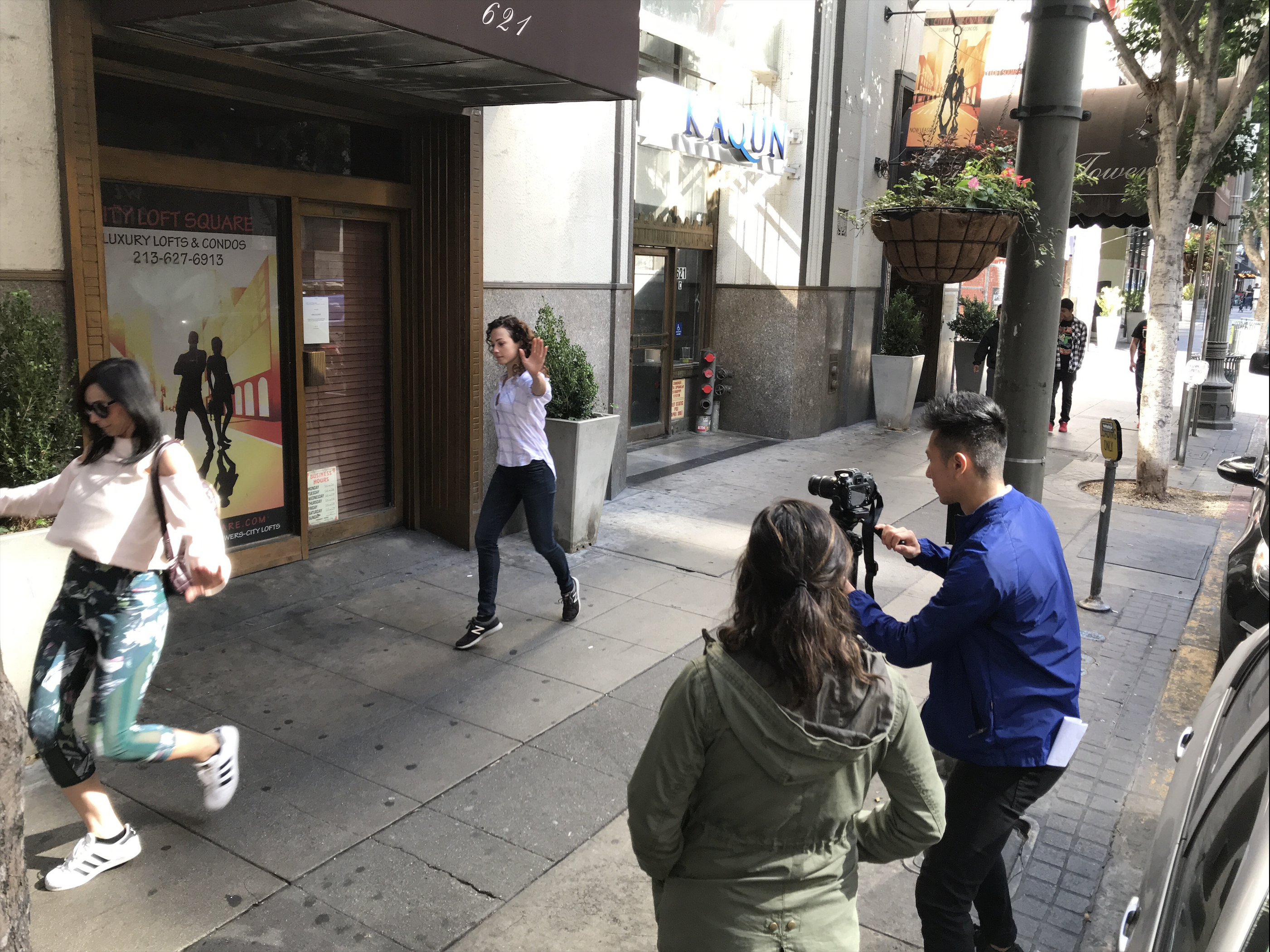


AI.gents of Neighborhood Change:
Leveraging Predictive Analytics for Developing in the IoT Era
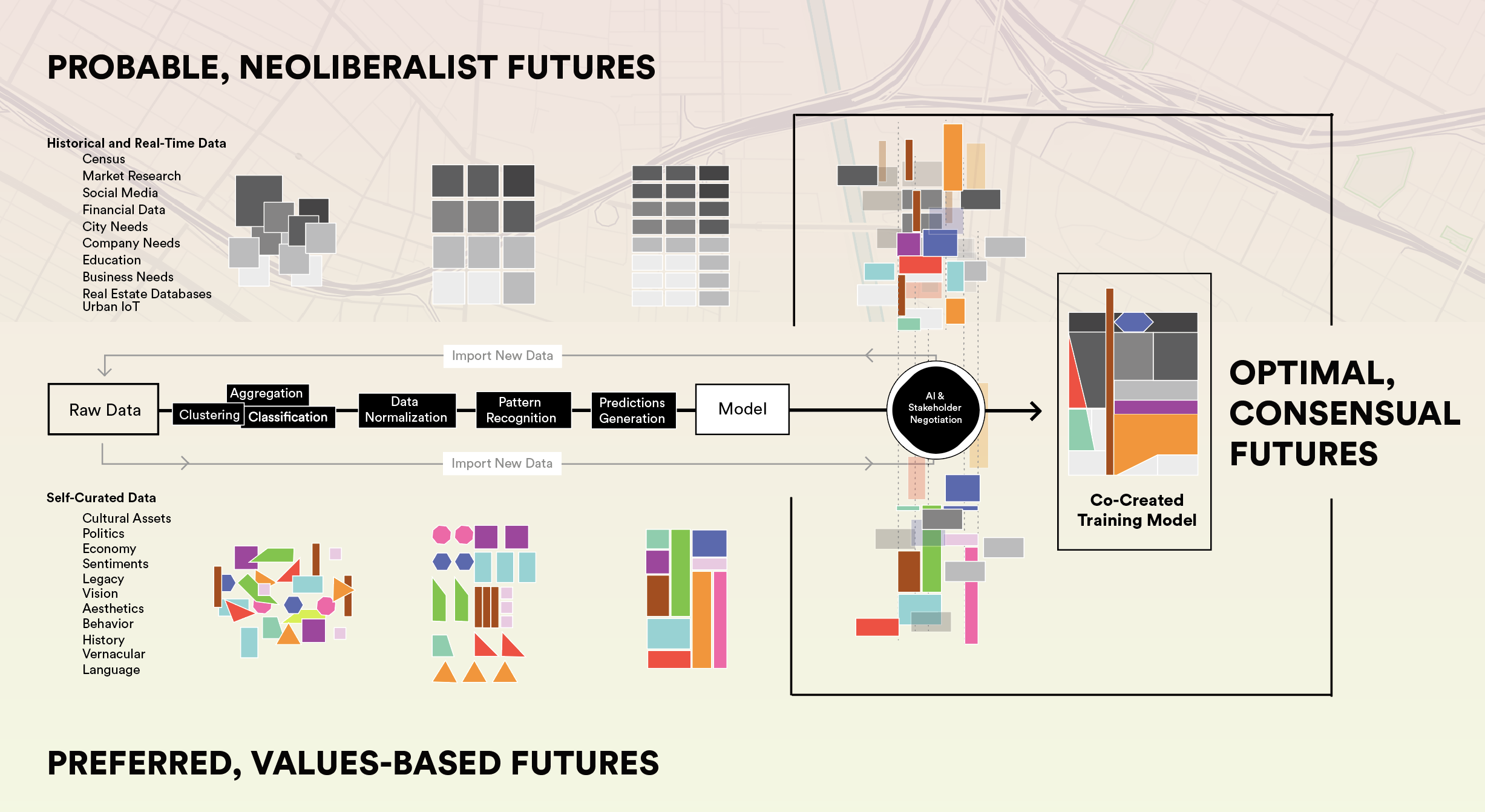
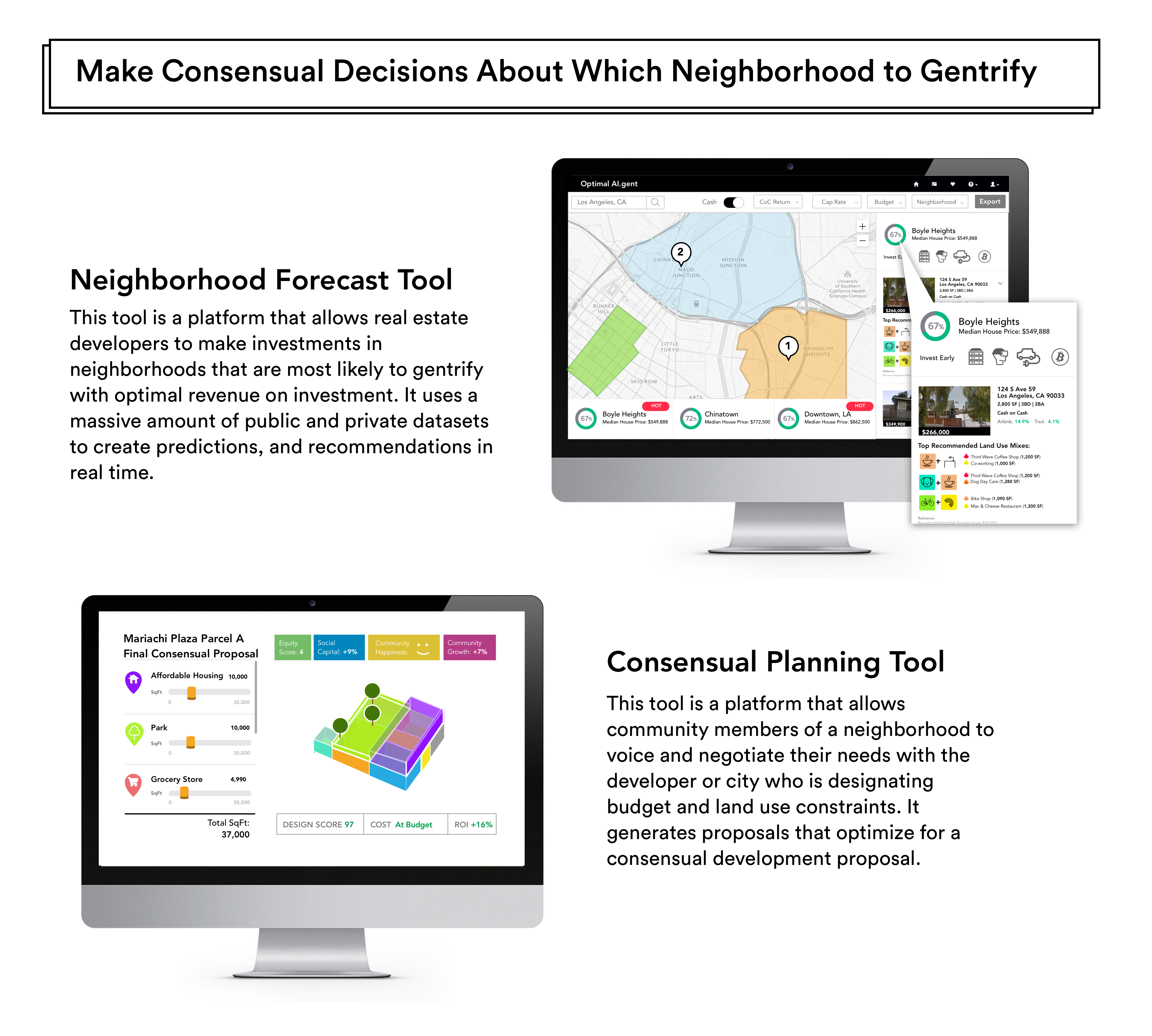
*The Neighborhood Forecast Tool interface was influenced by and informed by real data collected from MashVisor, a startup that provides real-time forecasting for profitable home investments based on Cash on Cash, Airbnb and Traditional real estate metrics.
How can Artificial Intelligence help real estate developers, cities, and community members negotiate a resolution on urban development?
Summary
As cities prepare for the transition to The Internet of Things and Articial Intelligence economy, there is little investment in planning for the urban impact of this transition at the local scale. Now more than ever, it is crucial to prioritize humans over capitalism and and ways to mediate technological advancement with cultural preservation, and critically engage with communities to forecast what ‘smart city’ changes mean for them and their neighborhood. Focusing on ‘smart’ redevelopment of a Metro station called Mariachi Plaza in a predominantly Latinx neighborhood, Boyle Heights, this project proposes that articial intelligence, while designed to optimize for efficiency and profit, can be reconfigured to optimize for other goals in the planning process, such as equity, cultural values, and historical preservation. Following the logic of predictive analytics machine learning models, Optimal Ai.gent is a predictive analytics tool designed for community members to create custom machine learning models that will generate optimal ‘futures’ that provide alternative investment proposals on land use for developers and urban planners to consider and further configure to reach a consensus on decision making.

Laurie Avocado / Flickr creative commons
Context
Boyle Heights is a predominantly Latino, low-income neighborhood adjacent to Downtown Los Angeles that is currently undergoing gentrification with great resistance towards gentrifiers that do not integrate itself with community consensus. While many of the current proposals for developing Boyle Heights include retail, clinics, and housing, I predict that in 5-10 years, due to it proximity to Downtown Los Angeles, the land proposals will shift from providing traditional brick and mortar services to those that serve a ‘smart citizen’ demographic spilling over from Downtown Los Angeles. This prediction stems from research done on historical gentrification patterns near city centers and transportation hubs, buy low sell high strategies in real estate development, and trends in products and services currently being developed in the Internet of Things industry.

A notional map of the Quayside neighbourhood, image courtesy of Sidewalk Toronto
SideWalk Labs, a Google Aphabet company, is one company that is already taking steps to create a smart neighborhood in Toronto, Canada. However, on the list of many questions is how they plan on integrating with the community during the development process, due to bad reception from the public on their previous LinkNYC project, where they installed wifi Kiosks in old telephone posts that potentially puts vulnerable populations at risk for more surveillance. Link NYC since then has actually deployed a similar solution to the one I propose, bringing ‘participatory budgeting’ to the interfaces of those kiosks, allowing New Yorkers to vote on budget proposals in their city. As the LinkNYC project stands for showing the ‘power of digital tools for public good,’ how might the design of similar interfaces allow for community participation in nuanced development propositions? How might they engage the user in the conversation, or provide missing information?
How might a consensus be made where infrastructure for the Internet of Things is met halfway with the community members’ needs?






Final Presentation
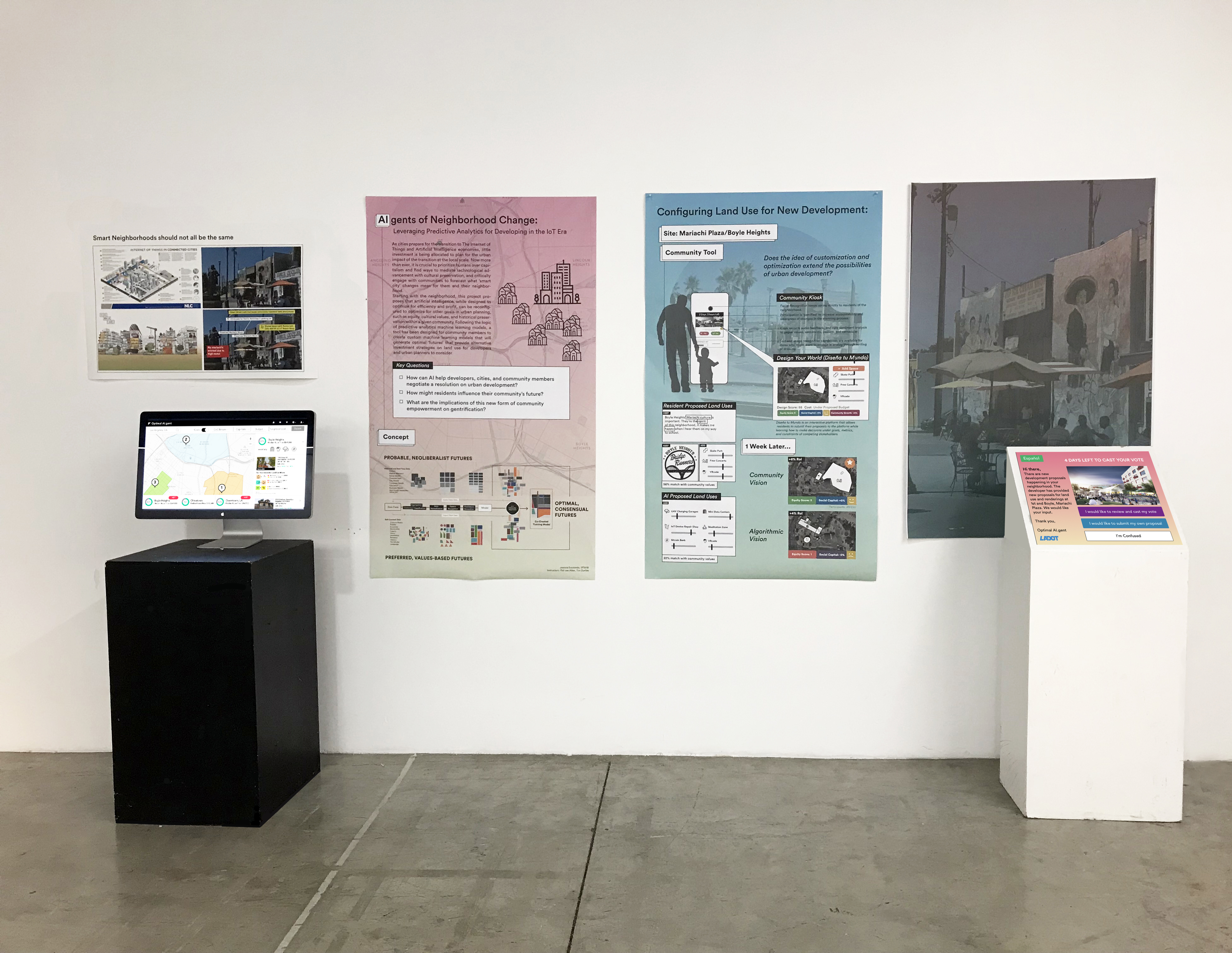


Conclusion
Feedback I’ve gotten for this initial proposal is that it is a good approach to finding new medium and sophisticated artificial intelligence/machine learning techniques to inform and engage stakeholders in the planning process. The design of future metrics, such as Equity, Social Capital, Community Growth, or “Design Score” are metrics that seem most interesting to explore for many. The next steps I am most interested in taking is designing the interface for which community members design and then preview their proposals using several media that might combine both programmatic renderings and data like virtual reality, augmented reality, simulations, and maps. Having a focus group or a community such as the one I have used in this project would be most ideal to bringing this tool to a live pilot.
Questions Moving Forward
Questions Moving Forward
- What is optimization and who is defining it?
- What is the interface design between humans and machine?
- What are the design strategies to make the co-creation process more inclusive and accessible?
- What is the media or experience that might provide a new approach or preview of said futures? (VR, AR, Physical Models, Diagrams, Games, Simulations, Screens?)

How does cultural assimilation change the brain's internal clocks?
What happens when the American Dream is no longer possible?
Summary
Alter_Sueños is a speculative fiction about a possible future in which the American Dream disappears, causing Americanized immigrants to pursue alternative dreams in alternate places with alternate time senses.
Synopsis
In 2022, DACA recipients' children are separated from their biological parents and 'taken in' by a Silicon Valley tech bootcamp aiming to create a talent pipeline for emerging artificial intelligent infrastructure, solving lack of 'diversity' issues in the tech industry and finding a way to gain cheap labor. The children are socialized to fit into the Silicon Valley tech culture, and later the Silicon Valley robot culture, as in the future, robots are their primary co-workers. When their AI specialized skills are no longer needed due to AI robots taking over the US labor industry, they are laid off and forced to leave the US and return to their 'home countries.' In high demand back 'home,' a neurotech company called Alter_Mundos is called on by the Mexican government to alter the brains of the returning DACA babies to that of a Latinx person in order for a fast transition to a new workplace.
Technology
A neurotech company called Alter_Mundos is working on optogenetic techniques such as cognitive behavioral e-mapping has the ability to manipulate cognitive processes of one time sense to another through precise neuron therapies. The main procedure is to take a workaholic brain that constantly thinks about time and task-oriented planning to that of Mexican culture, which revolves around family, duties, expression, and interpersonal relationships.

Company Advertisement
Inspiration


Sleep Dealer, 2009
Eternal Sunshine of the Spotless Mind, 2004
Topics
- DACA recipient deportations
- The future of work
- Silicon Valley diversity issues
- Immigration reform
- The pursuit of the American Dream
- Trauma
Read The Story
References
Chong, Nilda, and Francia Baez. 2005. Latino Culture. Yarmouth, ME: Intercultural Press.
Ferris, Tim. 2017. "How To 10X Your Results One Tweak At A Time". Podcast. The Tim Ferris Show. https://tim.blog/podcast/. Lind, Dara. 2017. "How Many Immigrants Have DACA, Really? We Finally Have One Answer — Just As They Start To Lose It.". Vox, , 2017. https://www.vox.com/policy-and-politics/2017/10/6/16431524/dacahow-many.
Reas, Emilie. 2013. "Your Brain Has 2 Clocks". Scientific American, 2013. https:// www.scientificamerican.com/article/your-brain-has-two-clocks/.
Smith, Charlene. 2017. "Meeting The Deadline: Workaholics And Their Brains". Brainworld, , 2017. http://brainworldmagazine.com/meeting-deadline-workaholics-brains/.
Wiener, Anna. 2016. "Why Can’t Silicon Valley Solve Its Diversity Problem?".
The New Yorker, , 2016. https://www.newyorker.com/business/currency/why-cant-silicon-valley-solve-its-diversity-problem.
Related Course Materials: Time, Work-Discipline, and Industrial Capitalism. E. P. Thompson. Past and Present, No. 38. (Dec., 1967) Rivera, Alex, and David Riker. 2008. Sleep Dealer. Film. USA, Mexico: Maya Entertainment.